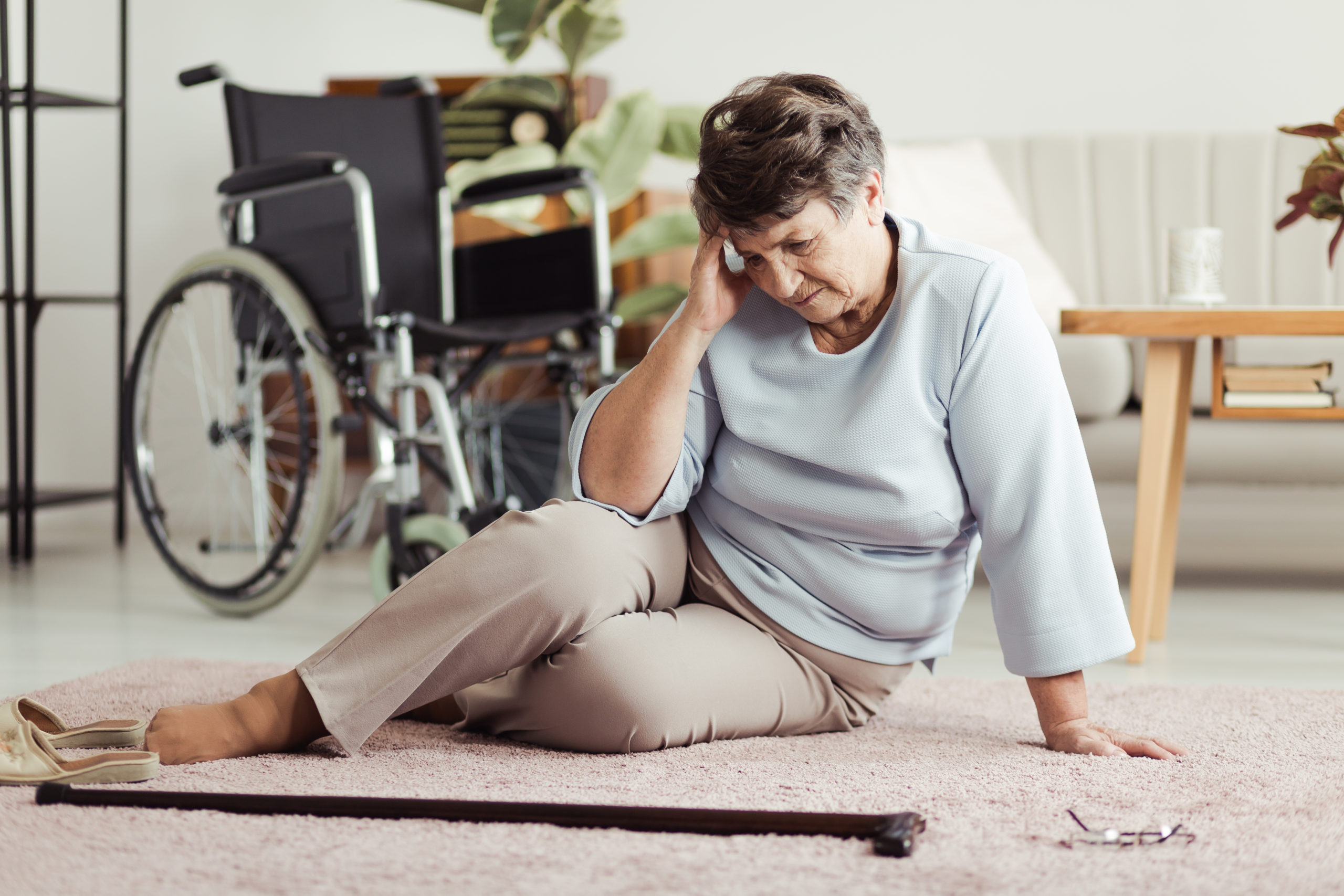Emergencies can happen anytime, any place. For a senior caregiver, the possibility of an emergency occurring when they aren’t nearby to provide assistance is always in the back of their mind. All too often, caregivers find themselves thinking, “If only I had been there.”
Because the risk of a fall or medical emergency is so high, many caregivers—both family and professional—rely on medical alert systems that can instantly contact help with just the push of a button. But what happens if a senior can’t reach the button or is incapacitated?
That’s where fall detection comes in.
Fall Detection: What It Is and How It Works
Fall detection is exactly as it sounds: When a device, such as a watch or a pendant that someone is wearing, detects certain sudden movements, it can automatically notify an emergency monitoring center to send help without the user needing to do anything.

Devices that include fall detection use a series of accelerometers (low-power radio wave sensors) to monitor the user’s movements. The device constantly keeps track of and evaluates the user’s physical activity, body position, and how smoothly their movements accelerate, which allows the tool to identify anomalies. If any measure hits a certain predetermined point, the device automatically assumes that the wearer has fallen, and it notifies emergency services.
Fall detection devices are precisely calibrated depending on where they are designed to be worn, which helps prevent false alarms while still ensuring that legitimate falls are recognized. The devices do have limitations, though. Because the speed of movement is a key factor in recognizing a fall, a slow slide off a surface (like a chair or bed) will not automatically trigger an emergency call. In these cases, the user will need to manually call for help via the button.
The Key Features of a Fall Detection Wearable Device
Unfortunately, many older adults aren’t enthusiastic about wearing an automatic fall detection device. For some, the devices themselves are uncomfortable and cumbersome to wear. For others, the idea of wearing a device is a reminder of their advancing age, which can be hard to accept when they’re still active and energetic. Even those who would benefit from emergency access— for example, individuals with chronic conditions —may not want to wear a constant reminder that they are sick.

What many seniors don’t realize, though, is that medical alert systems have come a long way since the early days of “I’ve fallen, and I can’t get up.” Many of today’s medical alert devices, such as the WellBe Smart Watch from HandsFree Health, are much more than just an emergency call button. In addition to fall detection, these devices include features like heart rate monitors, pedometers, and two-way communication right from the device.
Choosing a wearable fall detection device that contains certain other key features can also help increase a senior’s willingness to use it. Some of the appealing characteristics include:
- Comfort: Any medical alert or fall detection device needs to be lightweight and comfortable enough for daily wear. A cumbersome, heavy, or clunky device isn’t going to be worn, and fall detection is useful only when the user is actually wearing it.
- Water-resistant: Eighty percent of all bathroom injuries are caused by falls. Any medical alert device needs to be water-resistant so it can be worn in the bath or shower, ensuring help will be on the way when needed.
- GPS capabilities: If the device detects a fall, and the user is unconscious or incapacitated, they cannot tell emergency services where they are. A device with GPS provides exact coordinates, saving time.
- Easy-to-use: More features can sometimes mean more complicated devices. When choosing a device, look for one that’s user-friendly and intuitive.
- Protection from false alarms: Fall detection capabilities are constantly evolving and becoming more precise, but that doesn’t mean false alarms aren’t a possibility. Any device should have the ability to cancel the alert and let the monitoring center know that help isn’t needed.
Keep Seniors Safe with Automatic Fall Detection Devices
Serious falls are the leading cause of injury and death among people 65 and older, whether they live independently or in long-term care or assisted living environments. Both family caregivers and providers have a responsibility to help keep their loved ones and residents safe, and that should include using fall detection and medical alert devices. The time saved by automatically contacting emergency services could make all the difference.
Shop HandsFree Health’s family of fall detection wearable devices here, and give yourself (and the seniors for whom you care) greater peace of mind.
